Agri-renewables strategy for Scotland
This strategy shows how agri-renewables can contribute to the aim of building a cleaner, greener Scotland.
Chapter 6
Progress and Actions
Focus Area 1: Community Involvement and Benefits
6.1 The Scottish Government believes that there is so much more a community can gain from renewables projects over and above energy generation and financial benefits. This includes increased community cohesion and confidence, skills development and support for local economic development.
6.2 Moving forward, we must ensure community involvement is considered at an early stage in the development of agri-renewable projects and that progress towards meeting energy targets minimises the cumulative impacts of wind projects on the environment and local residents.
Recent Successes
- Our Community Benefits Register opened for business in April 2012. This will encourage transparency and consistency in the community benefits process and help communities to negotiate with developers and understand better what can be achieved. Community benefits relating to over 2,800 MW of developments were registered by Summer 2013.
- To date, rural businesses have been offered loans totalling £3.7 million under CARES which, if all schemes are built, will be worth up to £14 million of community benefits over 20 years. £3 million per financial year has been committed for rural businesses under CARES in the current spending review period.
- The Scottish Government is leading the way in terms of the community benefit rate for renewable developments on the public estate. The £5,000 per MW rate negotiated by Forestry Commission Scotland is encouraged as good practice across the sector. CARES provides advice on community benefit from developments of wind and hydro schemes on the National Forest Estate.
- Our recommended baseline community benefit rate of £5,000 per MW and encouragement of the opportunity for direct community investment has now been adopted by Scottish Renewables in a new protocol.
- Up to June 2012, an estimated 204 MW of community and locally owned renewable energy generation was operational in Scotland across 5,000 individual sites. The largest proportion of operational capacity is on Scottish farms and estates (68 MW, or 33%).
- Guidance on community engagement in the renewable energy development process has been integrated into Scottish Planning Policy ( SPP).
- The Scottish Government published Good Practice Principles for Community Benefits from Onshore Renewable Energy Developments for public consultation between November 2013 and January 2014.
Key Actions
- Make significant progress towards our 500 MW target through continuing with CARES support to help land managers and rural enterprises progress projects.
- The Scottish Government will promote the development of renewable energy projects on Scottish Ministers' Crofting Estate which maximise opportunities for community ownership and benefits.
- Agricultural businesses to continue to lead the way on engagement and identifying benefits with their local community through early collaboration to offer community benefits, including identifying local opportunities to fund energy efficiency schemes and measures to mitigate fuel poverty.
- Our Community Benefits Register is gaining momentum, with nearly 100 individual projects now featured. Agricultural businesses to build on this momentum by providing community benefits and registering these on the Community Benefits Register.
- Through CARES, we will promote the Good Practice Principles for Community Benefits from Onshore Renewable Energy Developments to a wide range of stakeholders and interested groups, targeting onshore technologies that currently have a lesser association with community benefits such as biomass, hydro and solar PV. We will also encourage community benefits from all scales of development, notably single wind turbine developments in rural areas.
- Scotland's Rural College and other delivery partners to promote best practice in community involvement and benefits, as well as CARES, through their farming advisory activity.
- CARES Conference to take place in March 2014.
- Renewables developers are beginning to respond to the call to link local energy generation directly to local energy costs. The Scottish Government will continue to encourage local energy developers to consider schemes that offer discounts to local electricity consumers.
Solar Photo Voltaic Case Study: Sandystones Farm
Farm: Sandystones Farm is a mixed arable and stock farm near St. Boswells in the Scottish Borders.
Technology: 50 kW ground mounted photo voltaic array, purchased and installed through the Borders Machinery Ring, which had negotiated bulk purchase discounts with a supplier.
Some of the energy generated is used on the farm, for example for the electricity demand for the game hatching sheds.
Resource: In order to optimise the output of the PV panels, a ground mounted array was chosen as this allowed the optimal orientation of the panels. In addition, there was no roof space available that was large enough for a 50 kW array. To date the output of the PV panels has been above the predictions.
Project economics: The total installed cost of the system was £75,000, with an expected Feed in Tariff income of £8,000 per year. Including expected savings on electricity bills, the payback is anticipated to be 8 years.
Why was PV installed? The business wanted to invest in renewables and PV was the least contentious option with no barriers to installation. Planning consent was straight forward and the system was up and running fairly quickly. The system has been easy to maintain and monitor. As well as the improved output, a ground mounted array has the advantage over a roof mounted array in that cleaning is simpler and there is no risk from snow loading.
With thanks to Guy and Philippa Lee, Sandystones Farm.
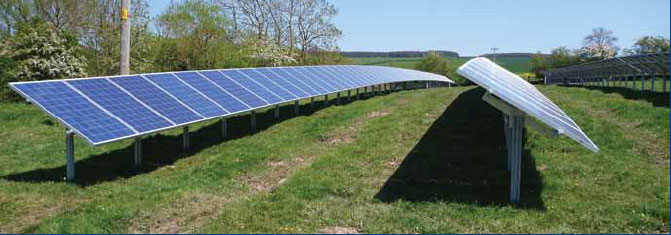
Focus Area 2: Skills and Advice
6.3 The provision of trustworthy independent advice is key to help farmers and crofters assess the feasibility of potential renewables developments and increase understanding of the processes involved.
6.4 The range of technology options, along with advancing support mechanisms, has meant that there is a need to develop the skills of land managers to increase their confidence to invest in renewables.
Recent Successes
- Farming For a Better Climate provides on farm demonstration events and workshops to allow farmers to see renewables in action on a host farm, hear from other farmers about their experiences and explore how renewables could work on their farm.
- The Scottish Government funds Scotland's Rural College to provide impartial expertise on farm scale renewables through their Rural Diversification Advisory Activity. This includes web based advice, along with a telephone and e-mail service. Renewable energy practical guides highlight a range of technologies and give an overview of funding support along with suggesting other sources of information.
- Renewables feature as a strong theme of Scotland Rural Development Programme ( SRDP) funded projects Future Proofing Scotland's Farming and Scotland's Farming Innovation Network. In particular, practical events on biomass and anaerobic digestion are offered. The programme provides on going advice and support through training events, farm walks, fact sheets and case studies.
- Forestry Commission Scotland ( FCS) provides advice to farmers and estate owners thinking of utilising their own woodlands for fuel. Regional woodfuel forums also exist to provide valuable networking opportunities for local woodfuel users and suppliers.
- CARES Renewables Handbook provides community groups and rural businesses with information on the various renewable energy technologies available on the market, ways of maximising community involvement, and how to benefit from renewable energy.
Key Actions
- National Farmers Union Scotland and Smiths Gore to deliver a new Renewables Development Initiative that was launched in Autumn 2013. This programme, funded by SRDP, aims to provide a platform for skills development based on farmers' experiences with renewables developments.
- CARES consortium to further develop the practical help and expert guidance available through CARES and update the guidance to land managers to reduce the barriers to community or local rural business entrepreneurs who want to develop renewable energy generation projects.
- Zero Waste Scotland to provide support for those working within agriculture on waste management, anaerobic digestion and composting. The Zero Waste Plan for Scotland highlights the role of anaerobic digestion and where appropriate, energy from waste.
- Scotland's Rural College to further expand the web resource on farm scale renewables and develop technology tool kits to help farmers through the process of planning and implementing a renewables installation.
Advice and Skills: Renewables Development Initiative
Scotland Rural Development Programme: Skills Development Scheme
The Skills Development Scheme, which is part of the Scotland Rural Development Programme ( SRDP), provides financial support towards the organisation and delivery of group skills development initiatives for land managers, including farmers, crofters and foresters. It aims to build on the success of industry-led or inspired initiatives that promote the development of land and business management skills.
Renewables Development Initiative
This Skills Development Scheme project is led by National Farmers Union Scotland ( NFUS) and facilitated by Smiths Gore. It aims to provide practical knowledge to land managers and farmers interested in pursuing on farm renewable technologies through a series of on farm demonstration events.
The three year programme provides a platform for knowledge exchange based on farmer's experiences with renewables developments. It aims to follow the development of renewable energy generation at a total of fifteen farms across Scotland, providing an opportunity to discuss and explore some of the key issues surrounding the sector.
The selected farms will demonstrate the challenges faced and solutions adopted as a renewables installation progresses from preparation to operation. The project, which commenced in Autumn 2013, aims to achieve an in-depth exchange of the knowledge and experience that already exists amongst farmers, as well as providing guidance from industry experts.
The European Agricultural Fund for Rural Development: Europe Investing in Rural Areas. The funding is made available through the SRDP Skills Development Scheme, which is jointly funded by the Scottish Government and the European Union.
Focus Area 3: Planning and Consents
6.5 Our National Planning Framework ( NPF) sets out a long term strategy for the spatial development of Scotland. Scottish Planning Policy ( SPP) is a statement of the Scottish Government's policy on how nationally important land use planning matters should be addressed across the country.
6.6 Our modernised planning system has sought to improve the efficiency and effectiveness of planning and consents procedures. Planning policies are in place which encourage appropriate siting and good design for new developments. An increase in the number of applications for large and small wind farms means that great care must be taken to ensure that adverse cumulative impacts on communities and the environment are mitigated.
Recent Successes
- The Scottish Government commenced the review of NPF and SPP in Autumn 2012. We have undertaken extensive engagement and consultation on both documents.
- The intention is that the revised SPP will continue to provide clarity on matters to be taken into account by planning authorities when considering the impacts of individual development proposals. The revised SPP aims to promote consistency in the preparation of development plan onshore wind spatial frameworks, which help guide wind turbine developments to appropriate locations.
- In 2013, the Scottish Government provided £725,000 to fund 17 bids for planning authorities to assist in dealing with high volumes of applications for wind turbines. The impact of these funds will be assessed.
- The Scottish Government planning advice on renewables is available online. It is updated as necessary to include advances in new technology, incentives and planning practice. This approach has met with a favourable response from stakeholders.
- In March 2012, Scottish Natural Heritage ( SNH) added additional guidance for small scale wind turbines to its suite of guidance to assist planning authorities in processing the growing number of enquiries in this field.
- SNH have introduced a simplified approach to assessment of small schemes of three wind turbines or fewer. SNH only provides comments where a scheme requires an Environmental Impact Assessment ( EIA) or a Habitats Regulation Appraisal.
- SNH have also issued improved guidance on EIA requirements for renewables planning applications. They have also developed a screening checklist to help developers provide better quality assessments and to support effective decision making at planning authority level.
- In 2010, Scottish Ministers published a Policy Statement on optimising the potential for hydropower generation and protecting the water environment.
- Following that, Scottish Environment Protection Agency ( SEPA) published guidance for run of river hydro schemes that allows developers to identify which developments are likely to be acceptable. This allows developers to tell at the scoping stage whether a development is potentially consentable.
Key Actions
- The Scottish Government will reflect carefully on the responses to the consultation on NPF and SPP in finalising the policy documents. Both documents are due to be published in June 2014.
- The Scottish Government will promote partnership working with developers, consultees and communities on pre-application engagement and discussions to promote the value of thorough scoping. This is aimed at generating better applications which progress more smoothly through the planning system and have community support.
- Developers continue to have a responsibility to make use of the available guidance and improve the quality of information provided in planning applications. The Scottish Government promotes the use of pre-application discussions between planning authorities, applicants and other consultees. These should ensure that applications coming forward have the necessary supporting information required to allow authorities to progress applications, this in turn should reduce delays due to requests for additional information.
- The Scottish Government continues to work with both civil and military aviation stakeholders and industry to promote solutions to mitigate the impact of wind turbines on aviation radar in Scotland.
- The Scottish Government's Eskdalemuir Working Group, is making significant progress re-examining the scientific model which underpins the constraints around the Ministry of Defence seismic array, with a view to allowing further development in the area.
- In response to Public Petition 1469 on the neighbour notification of wind turbine applications, we have advised the Public Petitions Committee of the Scottish Parliament that we will produce good practice guidance in relation to public engagement on proposals for wind turbines. There will be a public consultation in due course on a draft of this guidance before it is finalised.
Planning and Consents: Permitted Development
Certain forms of renewable energy generation installation may be carried out as 'permitted development', when the impacts do not warrant the scrutiny of the planning application process.
Provided the development meets criteria set out in legislation, it does not require a specific grant of planning permission.
The Scottish Government has introduced permitted development rights for a range of non-domestic energy generation developments, such as:
- Ground and water source heat pump pipes;
- Solar photo voltaic and solar thermal panels;
- Structures for generating energy from burning biomass; and
- Structures for generating energy from anaerobic digestion of biomass.
The types of development that can be considered as 'permitted development', and the qualifying criteria, are set out in Planning Circular 2/2011.
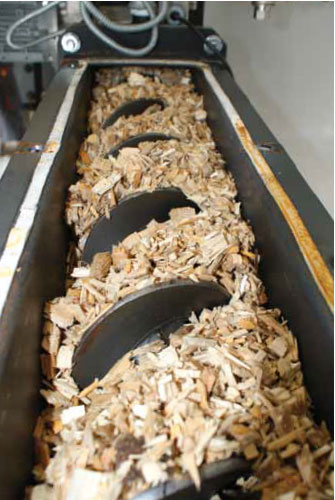
Focus Area 4: Grid Connection
6.7 The growth in distributed energy generation has brought a number of challenges both in connecting to the grid and accommodating intermittency on the grid. There is a need to continue to understand the challenges faced by all parties in connecting to a network, bearing in mind that farmers often do not have a choice of location.
6.8 All connections are subject to the ability of the system to absorb the load placed on it, and that depends upon the local conditions, including the number of generators seeking connection. The increased level of applications for embedded generation over recent years, along with the diversity of projects, has resulted in increased pressure to find grid capacity.
Recent Successes
- We welcome the implementation of the Connect and Manage scheme. This has seen many projects in Scotland connected to the grid in a much shorter timescale than under Ofgem's previous connection policy.
- In 2012, Ofgem announced up to £7 billion of investment from the Scottish Transmission Network Owners ( TOs), Scottish Power and Scottish and Southern Energy, to upgrade Scotland's electricity infrastructure. This investment will remove many constraints to the wider export of electricity and allow a great deal of generation to connect to the distribution network.
- Scottish Distribution Network Operators ( DNOs) have worked with stakeholders to produce a Distributed Generation Workplan, a standard application form and connection guide. They have also submitted their business plans for the next distribution price control period (2015-2023) to the regulator (Ofgem), for approval and will submit revised plans in March 2014. These business plans include proposals for maintaining and upgrading infrastructure, smarter energy management and other improvements for distribution connection customers.
- In October 2012, the Scottish Government, along with the UK Government, formed the Steering Group of the Scottish Islands Renewables Project which is working to identify options to mitigate the charges being faced by renewable energy generators in the Scottish Islands. The project has recently commissioned a grid access study to examine the challenges and consider associated policy and investment barriers to help overcome these barriers. This work will be completed in the first half of 2014.
- The Scottish Government has welcomed the review of the Transmission Charging methodology launched by Ofgem in Project TransmiT and recognises that the new approach to charges suggested in August 2013 by Ofgem may go some way to reducing long term discrimination against some Scottish generators. We also note their view that government is best placed to determine a preference or subsidy for one form of generation or one area of the country over another. However, there remains significant transmission charge discrimination which is inhibiting electricity generation in Central Scotland and we will continue to press for a fair solution.
- In May 2013, the Scottish Smart Grid Action Plan was launched by Scottish Enterprise at the opening of the Power Networks Demonstration Centre. Both new initiatives fulfil key objectives of the industry led Smart Grid Sector Strategy introduced in 2012 to capitalise on Scotland's smart grid expertise. Smart grids are digitally enabled grids that can accommodate changing pattern of demand and generation of electricity.
Key Actions
- The Scottish Government, along with the Scottish energy sector, will continue to press for a fair solution to transmission charge discrimination which is inhibiting electricity generation, particularly in our Island communities which have some of the best renewable energy resources in Europe.
- We have set up a Community Energy Grid Networks Working Group in partnership with the Scottish DNOs and Community Energy Scotland. This will identify and fund pilot projects that will get maximum use and value from the existing network around communities interested in generating their own renewable energy, potentially saving money on expensive upgrades.
- The Scottish Government will investigate access for agricultural businesses who offer community benefits to the CARES Infrastructure and Innovation Grant Fund, subject to European Commission State Aid rules. This is a limited grant fund available to investigate and develop projects that link local energy generation with local energy use, or projects that wish to develop innovative distribution network connections.
Grid Connection: Smarter Energy Management
Many locally-owned projects are faced with difficult and costly grid connections when trying to progress a renewables installation, with many wishing to take forward projects that use locally produced renewable energy to its best benefit - offsetting grid imported electricity, fossil fuel energy or transport energy.
- Wind2Heat is an example of using and storing locally produced energy more efficiently. In this system wind turbines can be linked into storage heating systems including both electric heating and water based systems.
- The registered power zone in Orkney is an example of using active network management for maximising connection potential on a rural network which can make a big difference to local energy generators.
- The Northern Isles New Energy Solutions research project in Shetland is an example of where active grid management and novel energy storage is being used to make the best use of local energy resources.
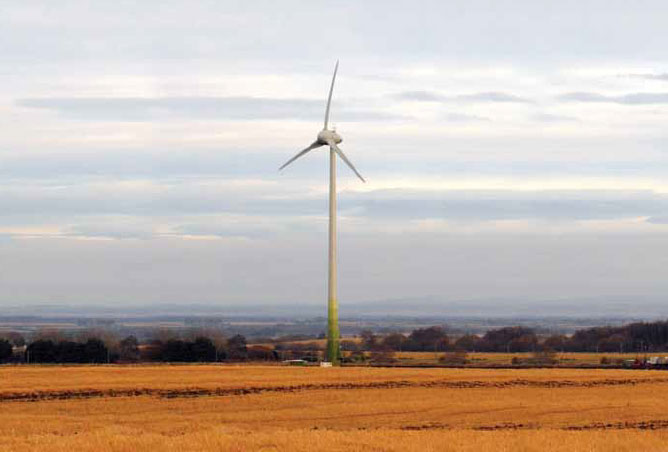
Community Involvement: Collaborative Working
The land use sector is already very familiar with collaborative working through ventures such as machinery rings and agricultural cooperatives. We are encouraging developers to adapt their business models to allow direct community investment in schemes as joint ventures or to provide community turbines as a form of benefits.
Joint ventures can include a number of farms sharing the costs, risks and benefits; or working in partnership with local community groups. CARES can provide advice to communities interested in entering into a joint venture, with funding available through REIF to invest in commercial schemes.
The Renewable Energy Investment Fund ( REIF) was set up in October 2012 following agreement with Treasury to draw down the Fossil Fuel Levy. REIF is a £103 million fund operated by Scottish Enterprise's Scottish Investment Bank. It offers loans and equity investments for renewable energy projects to fill funding gaps, with initial priorities for investment identified as marine energy (wave & tidal), community energy and district heating.
On the community energy REIF priority, Scottish Investment Bank staff work closely with Local Energy Scotland, the contractor for the Scottish Government's Community and Renewable Energy Scheme ( CARES). Indeed CARES has been refocused to act as the first stage of REIF for prospective community applicants, thus providing joined-up support to communities on the ground, as well as streamlining public sector resources.
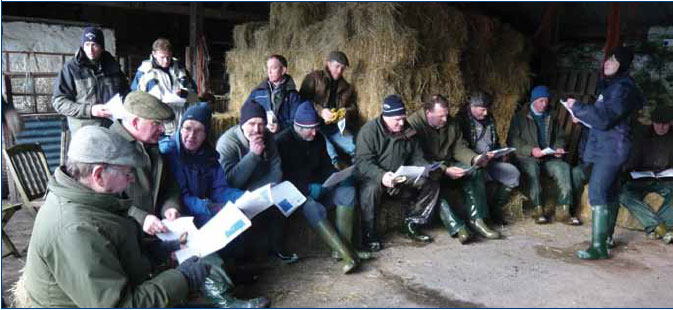
Community Case Study: Corrimony Wind Farm
Name: Corrimony Wind Farm, Glen Urquhart, Inverness-shire.
Installation: Five 2.3 MW turbines, commissioned in March 2013. The site is located at the head of Glen Urquhart on farmland owned by the Girvan family.
Project: Joint venture between Corrimony Energy, a local firm under the direction of the Girvan family who have run the family farm since 1941, and Soirbheas, a community charity for Glen Urquhart and Strathglass who invested in the project to earn revenue equivalent to the income from one of the turbines for the local community.
Community involvements and benefits: From the outset of the project, the Girvan family envisaged significant community involvement and offered the community the chance to have a financial interest in the wind farm.
Soirbheas are not involved in the running of the wind farm. However, their long term interests are protected through a formal agreement with Corrimory Energy.
The project will provide a number of social and economic benefits for the community. Soirbheas has recently appointed a part time Community Development Officer to support them in developing and consulting on the approach for spending and investing the revenue. Community members have suggested affordable housing, public hall upgrades, play areas, GP surgery, sheltered housing, community mini bus, recycling initiative, and a youth shelter.
With thanks to the Girvan family and the communities of Glen Urquhart and Strathglass.
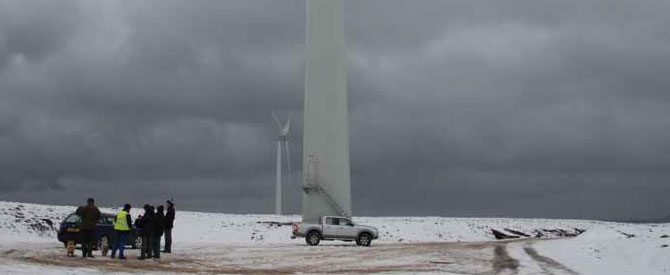
Finance and Technology Costs: District Heating Loan Fund
The District Heating Loan Fund offers loans to support the development of district heating networks in Scotland. The scheme can provide loans for both low carbon and renewable technologies in order to overcome a range of infrastructural issues and costs of developing heat networks.
Low interest loans of up to £400,000 per project are made available to be repaid over a period of up to 10 years. The scheme is open to small and medium sized enterprises, energy services companies ( ESCOs), local authorities and registered social landlords.
The scheme was designed to help address the financial barriers to district heating schemes, as the high start-up costs can mean schemes fail to get off the ground because commercial finance is not available. The loans are helping businesses and communities, particularly in rural areas, to develop affordable, green and locally produced heat.
To date, 13 projects have taken up £2.4 million in District Heating Loans, with more projects in the pipeline. The Scottish Government has committed a further £5 million to the District Heating Loan Fund, delivered by the Energy Saving Trust.
A number of farms and estates have received loans for installation of farm-scale biomass heat networks. This not only contributes to our renewable heat targets, but is encouraging farm businesses to develop woodfuel supply chains and ESCOs to supply heat and benefit from the Renewable Heat Incentive ( RHI).
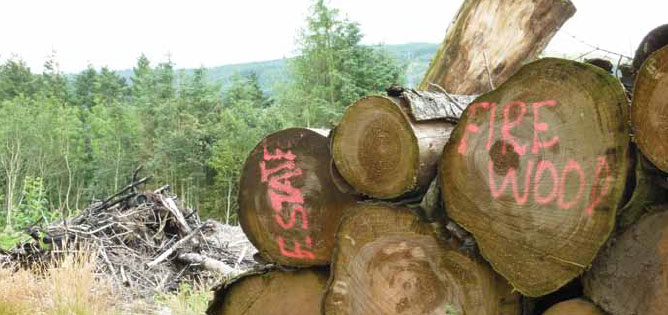
Focus Area 5: Finance and Technology Costs
6.9 In order to continue on course for 2020 renewables targets in electricity, heat and community and locally-owned renewables, we will need first and foremost to maintain developer and investor confidence. Access to finance for community and locally owned projects can create a barrier, as can high capital costs for some installations.
6.10 The main financial incentives for farm scale renewables are the Feed in Tariff (FiT) and Renewable Heat Incentive ( RHI), which are reserved to the UK Government. These financial incentives are an important tool to drive uptake of renewable technologies. We must, however, recognise that budgets are constrained. Following the latest review, the UK Government has adopted long term tariff settling mechanisms in line with calendar or national installed capacity.
Recent Successes
- The FiT and non-domestic RHI have driven rapid growth in uptake by providing financial incentives for low carbon energy generation technologies. This has resulted in market growth, greater availability of micro-renewables technology and, in some instances, reduced technology costs. The Scottish Government works closely with UK Government to ensure Scotland benefits from low carbon support schemes.
- The Scottish Government, along with stakeholders, successfully influenced the FiTs review to ensure that remote hydro installations can access the FiT on an individual basis as well as securing preliminary accreditation for projects and a new support band for hydro schemes.
- We also successfully encouraged the increase in FiT for anaerobic digestion schemes of 250 kW or less or those not exceeding 500 kW to provide greater certainty for installers.
- CARES is providing loans of up to £150,000 to communities and rural businesses to support the high risk pre-planning stage of project development.
- The District Heating Loan Fund is providing low-interest loans of up to £400,000 for small-medium scale businesses to install renewable and low carbon district heating, helping them to access the Renewable Heat Incentive.
- A new package of support for communities has been announced under the Renewable Energy Investment Fund ( REIF) to provide community renewables projects with access to loan and equity finance for projects that have secured the right to develop their site and have a grid connection confirmed.
- SRDP 2007-2013 has supported the uptake of agri-renewables through providing grant funding for the purchase and installation of renewable energy systems, cultivation of energy crops and forestry planting. Grants for local renewables projects with a wide community benefit, such as wind energy cooperatives, have been supported through LEADER.
Key Actions
- The Scottish Government will continue to work constructively with the UK Government to ensure a strong and effective framework to support our renewable energy priorities and provide a clearer framework within which businesses can operate.
- Our delivery partners will continue to lead the way in maximising uptake of FiT and RHI through our farming advisory activity.
- The Scottish Government is continuing to work with financial institutions to identify sustainable funding arrangements for agri-renewable developments. This includes the provision of loans for the post planning and implementation stages of projects.
- Under CARES, the Scottish Government will consult the Tenant Farming Forum ( TFF) in the development of good practice guidance for tenant farmer/owner partnership for renewable energy schemes.
- The Scottish Government, along with stakeholders, will consider how the new SRDP from 2015 can support the uptake of agri-renewables.
- Scottish Agricultural Organisation Society ( SAOS) will work with the sector to develop models for collaborative working and joint ventures and encourage rural businesses to pursue cooperative approaches to renewables projects.
Finance and Technology Costs: Feed in Tariff and Renewable Heat Incentive
The Feed-in Tariffs (FiTs), introduced in 2010, incentivise small-scale energy production under 5 MW. The FiTs are available for renewable energy generation from wind, solar, hydro, anaerobic digestion and domestic scale micro combined heat and power.
The Non-Domestic Renewable Heat Incentive ( RHI) was launched in 2011. It offers funding to support heat and bio-methane from anaerobic digestion produced from renewable sources. It has been designed to encourage the use of low carbon heating technologies such as wood fuelled boilers and ground source heat pumps.
The Domestic Renewable Heat Incentive is expected to be launched in Summer 2014. The Renewable Heat Premium Payment ( RHPP) is providing interim funding for the installation of renewable heat technologies.
Grant funding is incompatible with access to the UK regulatory incentives. Therefore, those who receive a grant which contributes to the direct costs of an installation will not be eligible to apply for the FiT or RHI for that installation.
Further information and eligibility criteria are available on the UK Government Department of Energy and Climate Change ( DECC) website or the Energy Saving Trust website.
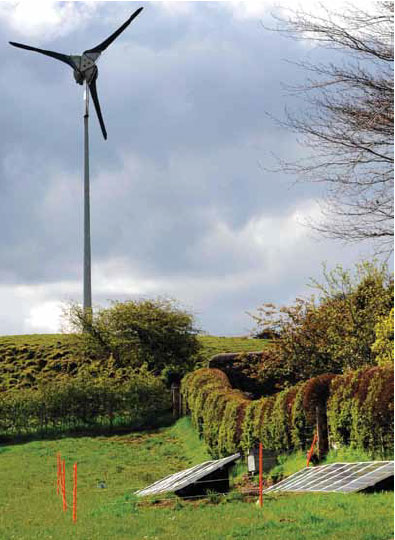
Finance and Technology Costs: Renewables Obligation (Scotland)
The Renewables Obligation (Scotland) is an obligation on electricity suppliers to source an increasing proportion of electricity from renewable sources. The Renewables Obligation (Scotland) is designed to encourage the installation of large scale renewable electricity production and works alongside the other UK Renewables Obligations. Further details can be found on the Ofgem website.
Whilst the Renewables Obligation (Scotland) is currently the key incentive for the build of new, larger scale renewable electricity generating capacity across Scotland, its future beyond 2017 depends very much on the outcome of the current electricity market reform proposals.
- Accredited renewable electricity installations are issued with Scottish Renewable Obligation Certificates ( ROCs) for the electricity generated on a monthly basis.
- Electricity suppliers have an obligation to generate a given
number of
ROCs.
If they do not meet their obligation, they must buy ROCs from other parties. - Renewable electricity suppliers can then trade their ROCs with these energy suppliers.
- For the majority of farm-scale renewable electricity installations the FiT will be the preferred option.
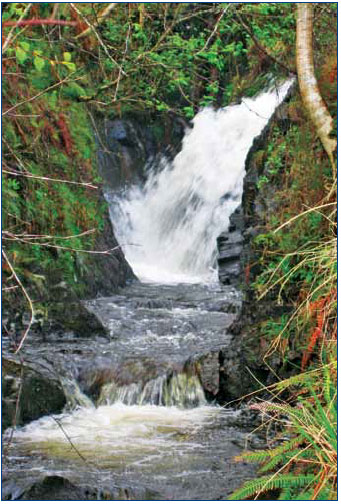
Focus Area 6: Research and Innovation
6.11 Research and innovation is a fundamental requirement to inform the future development of farm scale renewables. It is important that research outputs are accessible and used to inform future policy development and advisory activity targeted at farmers. The Scottish Government encourages innovative approaches to drive the sector forward.
Recent Successes
- As part of the Scottish Government's Strategic Research Portfolio 2011-2016 some £150,000 is being invested in projects that directly apply to the on farm production of energy, and as part of the wider programme, improving our understanding of the associated issues relating to land use, the natural environment and rural communities, and associated links with climate change adaptation and mitigation.
- The Renewable Energy Consultative Group ( RECG) provides advice on the overall direction of the energy component of the Strategic Research Programmes where they relates to renewable energy, knowledge exchange opportunities, and the application of research findings. Its membership is drawn from relevant Scottish Government policy teams, public agencies, local authorities, community groups and other stakeholders.
- As part of the FarmPath (Farming Transitions: Pathways towards regional sustainability of agriculture in Europe) collaborative research project, on farm renewable energy production in Scotland is being studied. The programme runs from 2011-2014 and is funded through the European Commission's Seventh Framework Programme and co-funded by the Land Use Theme of the Scottish Government Environmental Change Research Programme. Further details and research findings can be found on the FarmPath website.
- The Scottish Government led and managed the GP Wind project which was set up to address barriers to the deployment of wind energy generation, by recording and sharing good practice in reconciling renewable energy objectives with wider environmental objectives and actively involving communities in planning and implementation.
- In April 2013, the Scottish Government's Climate Change Centre of Expertise (ClimateXChange) published a report on the health impacts of wind turbines. This report analysed UK and international academic literature published in the last four years on the effects of wind turbines on human health.
Key Actions
- A programme of communications is being developed by the Scottish Government's Main Research Providers in order to disseminate on-farm energy research findings to inform advisory services and support policy needs.
- The Scottish Government recognises the increasingly important role energy storage could play in Scotland, enabling us to harness our renewables resources effectively and efficiently for a wide range of uses. We are working with key partners to better understand the specific opportunities for Scotland.
- Scottish Enterprise is currently undertaking a feasibility
study to assess the potential for using renewable energy,
particularly wind and solar power to produce hydrogen and
subsequently ammonia, at an appropriate scale in rural Scotland.
The study will be completed in Spring 2014. - The DC-Agri project is a four year research project looking at the use of quality anaerobic digestate and compost in agriculture, integrated with an extensive knowledge exchange network. The project is funded jointly by Zero Waste Scotland, Defra, WRAP and WRAP Cymru.
- The Scottish Government has commissioned ClimateXChange to carry out a number of research projects to inform energy policy development. Topics include, the social factors for success of community energy in Scotland, a study of the impacts of wind farms and a literature review of recent papers on energy storage.
- The Scottish Government recently established the Scottish Biofuels Taskforce, which reports to the Scottish Energy Advisory Board. Its remit is to assess the potential for the development of a biofuels industry in Scotland. It is chaired by Scottish Enterprise, and includes representatives from Transport Scotland, the Scottish Government, Highlands and Islands Enterprise ( HIE) and industry.
Anaerobic Digestion Case Study: Rainton Farm
Farm: Rainton Farm is an organic mixed livestock
farm near Gatehouse of Fleet.
The farm is also home of luxury ice cream maker Cream o'
Galloway and a popular visitor destination.
Technology: The 'AgriDigestore' is fitted to the slurry tower on the new state of the art dairy unit. The system includes a 25 kWe CHP, floating roof gas holder and gas mixing system. The system is an experimental design, which is hoped will provide an economically viable model for small scale farm AD that can be rolled out across Scotland. Due to the experimental nature of the project, modifications were needed to the roof. This meant that final completion took longer than expected with work ending in Autumn 2013. Depending on how much gas the system yields, there is potential to add a second CHP unit.
Fuel source: The feedstocks for the digester includes slurry from 140 cows and young stock and 250 tonnes of low grade silage as well as waste from cheese and ice cream production.
Funding: The estimated total cost is in the region of £210,000 including the slurry tank. The project will receive a 60% grant from SRDP. Including the SRDP grant and the expected income from Renewable Obligation Certificates and energy bill savings, the project is expected to pay back in 3.5 years.
Why install an Anaerobic Digester?
The business has strong green credentials and their aim is to maximise outputs whilst minimising bought in resources. Putting the slurry through the anaerobic digester will not only improve its value as a fertiliser but also reduce its toxicity to invertebrates and greenhouse gas emissions. And it will produce lots of electricity and hot water too which will be used in the dairy and if the biogas yield is good, it could also provide energy for the ice cream business.
With thanks to David and Wilma Finlay, Rainton Farm.
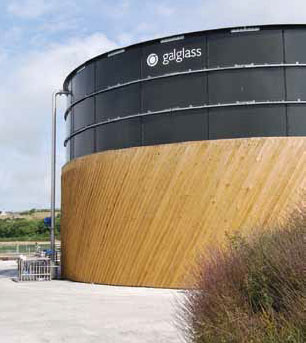
Contact
There is a problem
Thanks for your feedback